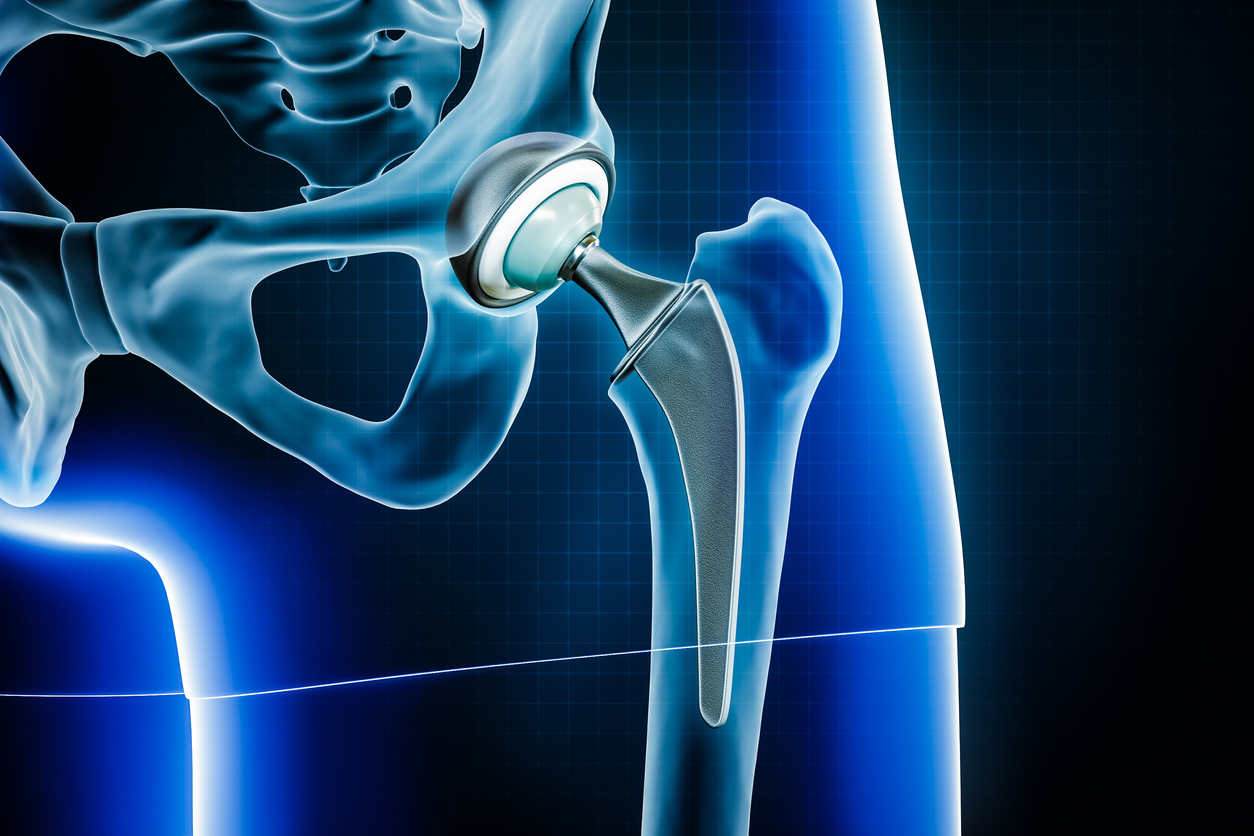
Hip Replacement Recovery: Tips & Timeline
Hip replacement is the ideal procedure for those suffering from high levels of hip pain or mobility issues. This surgical intervention alleviates discomfort and significantly enhances one’s quality of life by restoring mobility and independence. However, the journey to full recovery requires careful management and adherence to specific guidelines.
In this blog, we’ll explore the various phases of hip replacement recovery, offering valuable tips and outlining a timeline to help you understand what to expect during the healing process. Our goal is that this guide will provide you with essential insights to optimize your healing and regain your active lifestyle.
Understanding Hip Replacement Surgery
Anterior hip replacement surgery is a modern approach that allows for less muscle tissue disruption and a potentially faster recovery. During this procedure, the surgeon gets to the hip from the front of the thigh instead of the side or back. This technique spares the need to cut through major muscles, which traditionally has led to longer recovery times and increased pain post-surgery.
The anterior approach offers several benefits. Due to the minimally invasive nature of the surgery, patients typically experience less pain and have a quicker return to normal activities. The risk of dislocation is also reduced. The ability to position the hip implant more accurately increases, contributing to a longer-lasting joint.
Initial Recovery Phase
Recovery from anterior hip replacement surgery involves several stages, starting with the immediate postoperative phase. Most patients notice an immediate improvement in joint stability and range of motion. The initial recovery phase following hip replacement surgery is critical for setting the stage for a successful long-term outcome.
Immediately after the operation, patients will spend a few days in the hospital, where their recovery begins under close medical supervision. This period is crucial for monitoring any complications and adequately managing any pain. During the first 24-48 hours, patients are encouraged to begin moving as soon as possible with the help of healthcare professionals.
Early movement is essential for improving blood circulation, preventing blood clots, and accelerating the healing process. Pain management in this stage is typically handled through medications prescribed by the surgical team, tailored to minimize discomfort while fostering an environment conducive to recovery.
The care team also initiates physical therapy early on to help restore mobility and strength. These gentle exercises focus primarily on ankle pumps, leg slides, and other movements that encourage joint flexibility without straining the new hip. Initially, patients may require assistance with everyday activities and are advised to engage in light walking with crutches or a walker.
As patients show signs of improvement, they are prepared for discharge, usually within 3-5 days post-surgery. Before leaving the hospital, they are given specific instructions for care at home, including how to manage pain, prevent infections, and the importance of continuing physical therapy.
Recovery Timeline & Milestones
The recovery timeline from hip replacement surgery can vary depending on the individual’s health, the complexity of the surgery, and their commitment to follow-up care. However, most patients can expect to reach certain milestones that mark their progress towards full recovery.
1-2 Weeks Post-Surgery
Patients typically no longer need hospital care and can continue recovering at home. During this period, the focus is on managing pain and preventing infection. Continued use of walking aids is crucial. Patients may begin outpatient physical therapy. It’s also a time to gradually increase activities of daily living under the guidance of a physical therapist.
3-6 Weeks Post-Surgery
By this time, patients usually experience significant improvements in pain and mobility. They may start to walk with minimal or no assistance and engage in more substantial physical therapy exercises. The goal is to strengthen the muscles around the hip and improve flexibility.
6-12 Weeks Post-Surgery
Patients often return to most daily activities and can start enjoying low-impact activities such as swimming or cycling. Regular check-ups with the orthopedic surgeon are important to ensure may be made.
3-6 Months Post-Surgery
Most patients have returned to their normal daily routines. With approval from their healthcare provider, patients can participate in more demanding activities, such as hiking or golfing. Ongoing strength training and flexibility exercises play a role in maintaining hip function and overall health.
One Year & Beyond
Annual visits to the orthopedic surgeon may be recommended to monitor the long-term performance of the hip implant. Most patients enjoy a significant improvement in quality of life and pain relief, with the ability to engage in activities they love without discomfort.
Tips for Enhancing Recovery
Speeding up and enhancing your recovery after hip replacement surgery involves adhering to your doctor’s recommendations and incorporating several key practices. Engaging in regular physical therapy is crucial. It not only strengthens the muscles but also improves joint flexibility.
Maintaining a balanced diet rich in vitamins and minerals also supports tissue healing and overall health. Staying hydrated and avoiding smoking can also significantly benefit recovery. Finally, keep your living space organized in a way that minimizes fall risks, as preventing accidents can promote smoother recovery.
Palmetto Bone & Joint: Supporting Your Healing Journey
Recovering from hip replacement surgery is a significant journey that requires patience, proper care, and persistence. At Palmetto Bone & Joint, we are committed to supporting you every step of the way. We offer the resources and care needed to help you return to a more active, pain-free life.
Partner With a Leader in Hip Replacement in South Carolina
Our dedicated team in Chapin, SC, specializes in hip replacement surgeries. We’re here to guide you through your recovery. Trust our expertise and commitment to patient care to help you achieve the best possible outcomes and enhance your quality of life. Contact us online to get started.



